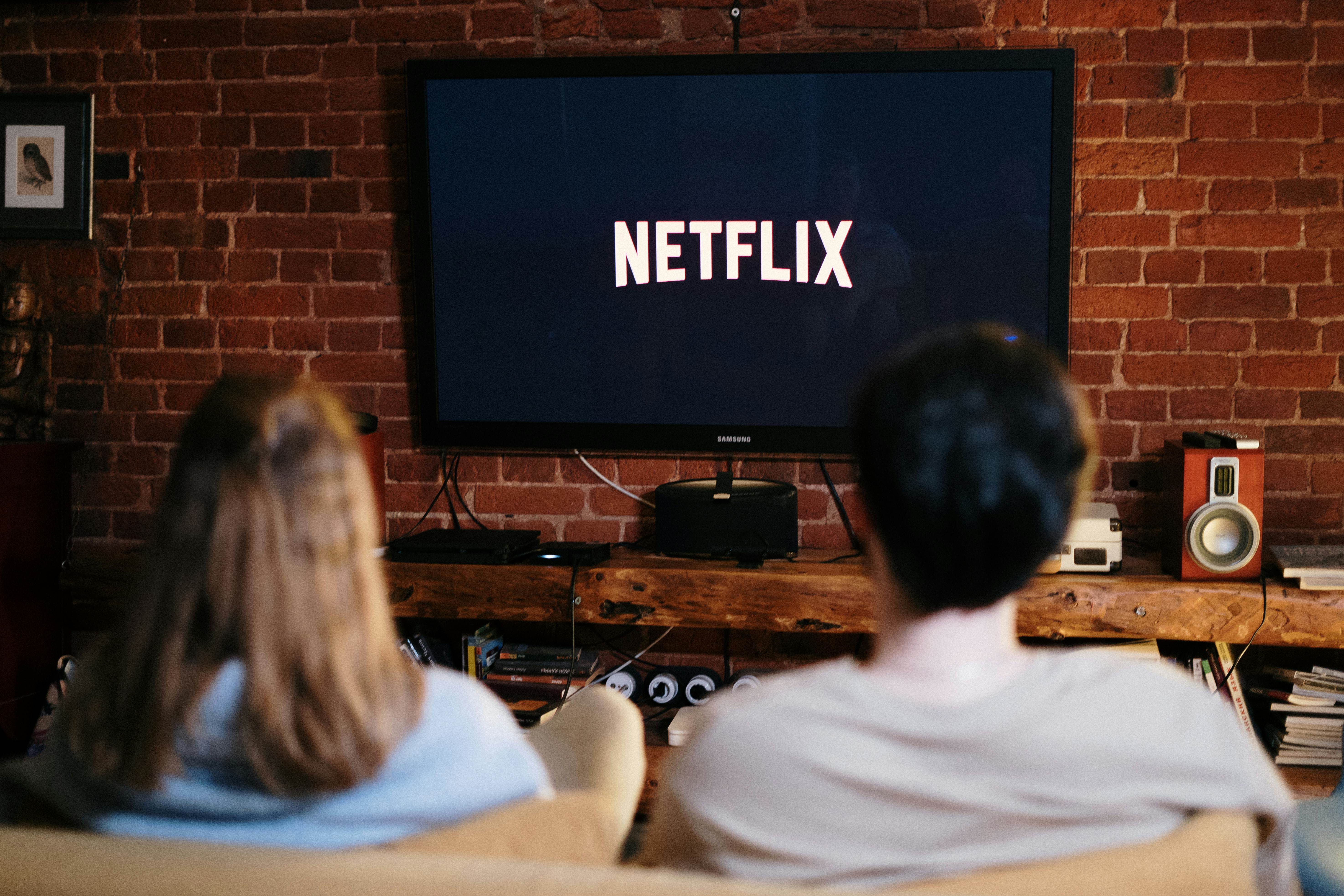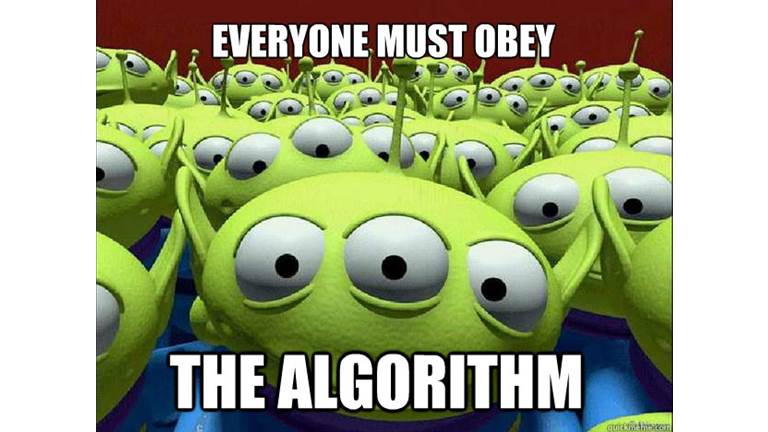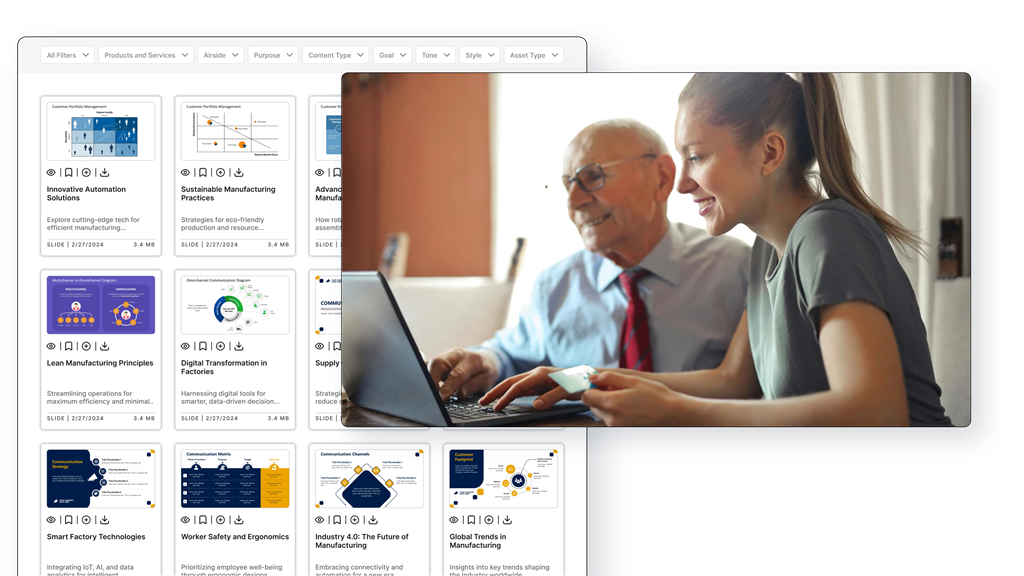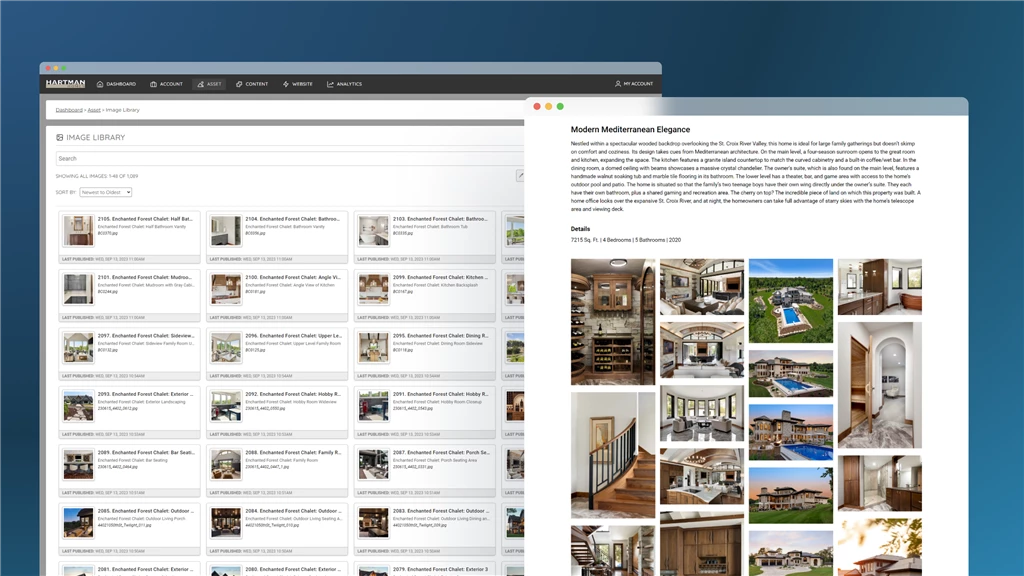You think you're in control.
You open Netflix, scan the options, and pick a show. Or maybe you hop onto YouTube for a “quick video” and, an hour later, you’re knee-deep in a rabbit hole of content you never planned to watch.
But let’s be honest—did you really choose that video, or did it choose you?
Because the algorithm knew.
Before you even opened the app, before you even thought about what you wanted, AI-powered systems were already curating your experience—lining up the next binge-worthy series, the next ad you’d pay attention to, the next topic you’d get hooked on.
This isn’t random. It’s not coincidence. It’s a carefully engineered system designed to keep you watching, engaging, consuming.
And it’s bigger than just entertainment.
- Why do some brands dominate social media while others disappear into obscurity?
- Why do certain businesses rank higher in search results—even when their content is no better than the competition?
- Why do some products go viral overnight while others, just as worthy, fade into digital oblivion?
Because the algorithm decides who wins—and who doesn’t.
And here’s the terrifying part: if you don’t understand how this system works, it’s already working against you.
Your business, your content, your message—it’s fighting for attention in a world where algorithms, not people, decide what gets seen.
But if you learn how to work with the algorithm, instead of against it?
You stop chasing attention. The algorithm brings it to you.
The companies that thrive today aren’t just the ones with the best products or services. They’re the ones who understand how to engineer visibility, trigger engagement, and play the system to their advantage.
By the end of this article, you will too.
Because in a world ruled by AI-driven content selection, you have two choices:
Master the algorithm—or be forgotten by it.
By the time you reach the end of this article, you’ll have a clear, actionable self-checklist that will reveal whether your content is algorithm-proof—or if it's getting buried before it ever has a chance to be seen. If you want to know where you stand, keep reading.
The Death of Randomness: How We Got Here
There was a time when content discovery was purely human. You walked into a video store and browsed the shelves, judging movies by their covers. You flipped through TV channels, settling on whatever caught your eye. If you wanted information, you went to a bookstore, asked a friend, or—if you were really desperate—cracked open an encyclopedia.
Before digital streaming, television networks dictated content distribution. Audiences had little choice but to watch what was scheduled at a fixed time. The key limitations of traditional television included:
- Linear programming: Viewers could not choose when or how to watch.
- Limited interactivity: Content was passively consumed.
- No personalization: Programming was designed for mass appeal, not individual preferences.
The internet fundamentally changed these constraints by separating content from a rigid broadcast schedule. However, early attempts to distribute video online were hampered by bandwidth limitations and inefficient data transfer methods.
Then, the internet changed everything.
The Breakthrough of Streaming Technology
The transition from download-based video to real-time streaming marked a significant technological breakthrough.
Key concepts that enabled streaming video:
- Adaptive Bitrate Streaming (ABR):
- A method that adjusts video quality in real time based on network conditions and device capabilities.
- Ensures seamless playback by reducing resolution when bandwidth is low and increasing it when conditions improve.
- Common protocols include MPEG-DASH, HLS (HTTP Live Streaming), and RTSP (Real-Time Streaming Protocol).
- Content Delivery Networks (CDNs):
- A global network of edge servers that cache video content closer to end-users.
- Minimizes latency and buffering by delivering content from the nearest available server, rather than a single central location.
- Examples: Akamai, Cloudflare, AWS CloudFront.
- Real-Time Transport Protocol (RTP) and WebRTC:
- Used in live video streaming applications to ensure low-latency delivery.
- Critical for video conferencing, live sports streaming, and interactive broadcasts.
- Compression and Encoding (H.264, H.265, AV1):
- Raw video files are enormous, requiring efficient compression to reduce size while maintaining quality.
These innovations collectively enabled platforms like YouTube (2005) and Netflix Streaming (2007) to scale their services globally. Suddenly, information wasn’t just available—it was infinite. Too infinite. The sheer volume of content became overwhelming. That’s when companies realized: people don’t just need content. They need a guide.
Enter the algorithm.
The Rise of Recommendation Algorithms
What started as a tool to help users find content faster has evolved into the single most powerful force shaping digital behavior. It doesn’t just suggest—it decides. It determines what you watch, what you read, what you buy, and what brands you trust.
“The algorithm is now the most powerful editor in history. It decides what people read, watch, and engage with—not human gatekeepers.”
— Eli Pariser, Author of The Filter Bubble
This isn’t a conspiracy theory. It’s data science at its peak.
And if you’re in business, ignoring it is the fastest way to make yourself invisible.
How Recommendation Engines Work
The transition from static content libraries to personalized video feeds is driven by machine learning and predictive analytics. Every time you interact with a streaming platform, it collects data about your behavior. This includes:
- What videos you watch and how long you watch them.
- Which content you skip, pause, or rewatch.
- What time of day you watch, and on which device
- What content people with similar viewing habits engage with.
This data feeds into machine learning models that predict what you’re most likely to watch next.
Most recommendation engines use a combination of:
- Collaborative Filtering– Finds users with similar watch histories and recommends content based on their preferences.
- Content-Based Filtering– Analyzes metadata (titles, tags, descriptions) to recommend videos with similar themes.
- Reinforcement Learning– Continuously updates recommendations based on real-time user behavior.
The goal? Maximize engagement, increase watch time, and keep users on the platform as long as possible.
For businesses, this raises an urgent question: how do you create content that these algorithms prioritize?
These algorithms are continuously refined using reinforcement learning, where user behavior feeds back into the model to improve future predictions.
How to Create Algorithm-Friendly Content: A Practical Playbook
If you want your business to thrive in an era dominated by AI-driven content selection, you need to stop thinking like a traditional marketer and start thinking like the algorithm itself.
“If you don’t understand how the recommendation engine works, you’re not just missing opportunities—you’re actively losing visibility. The companies that win in content marketing are those that play by the rules of the machine.”
— Neil Patel, Digital Marketing Expert & Co-Founder of NP Digital
There are no shortcuts. But there are strategies.
And the best businesses aren’t just creating content—they’re engineering visibility.
Let’s break it down.
1. Optimize for Watch Time and Engagement
The #1 metric that streaming and content platforms use to rank content? Engagement and watch time.
“YouTube’s recommendation algorithm is designed to maximize watch time, not just clicks. Videos that engage viewers longer get promoted more aggressively across the platform.”
— Cristos Goodrow, VP of Engineering at YouTube
If people abandon your content early, the algorithm assumes it isn’t valuable. But if they stay engaged, it gets pushed to more viewers.
How to Increase Watch Time:
- Start with a hook. The first 5 seconds determine whether someone stays or bounces. Get straight to the point—ditch the filler.
- Make content easy to skim. Even video content needs visual cues, subtitles, and chaptersto guide viewers.
- Encourage active engagement.
- Ask direct questions.
- Use open loops (“Stick around, because at the end, I’ll show you the #1 mistake businesses make…”)
- Prompt users to like, comment, or share—these signals boost rankings.
Smart Tools to Help:
- KNVEY– AI-driven content grading that provides practical improvement suggestions based on algorithmic standards.
- YouTube Analytics– Tracks audience retention and engagement drops, so you know what works.
- VidIQ & TubeBuddy– Help analyze engagement metrics and optimize video elements.
2. Make Your Content Easy to Discover (SEO & Metadata Optimization)
If search engines and recommendation engines don’t understand your content, they can’t promote it.
Metadata—titles, tags, descriptions, and structured content—matter more than ever.
How to Optimize for Search & Discovery:
- Use keyword-rich titles. Algorithms favor clear, searchable headlines over vague or clever ones.
- Bad Title :“Exciting Trends in Marketing”
- Good Title: “The Top 5 Marketing Trends That Will Dominate 2024”
- Write detailed descriptions.
- Include industry-specific keywords naturally.
- Provide summaries with clear takeaways.
- Add captions and transcripts.
- Platforms index subtitles, boosting rankings and accessibility.
- Use strategic tags.
- Use broad tags for general search visibility (e.g., “marketing strategy”).
- Use niche tags to target specific audiences (e.g., “B2B content strategy for SaaS”).
- Follow trending topics. If an industry trend is already performing well, align your content with it. The algorithm favors what’s already in demand.
Smart Tools to Help:
- KNVEY AI-Powered SEO Generation– Populates your metadata, keywords, and readable content to optimize for search.
- Surfer SEO– Provides AI-driven content recommendations for improved ranking.
- AnswerThePublic– Helps identify trending search queries related to your content.
3. Leverage AI Tools to Supercharge Your Content Strategy
The best way to beat the algorithm? Use AI to optimize for it.
“By 2026, 90% of online content will be generated by AI. The challenge isn’t whether AI will create content—it’s how businesses will blend AI-driven insights with authentic storytelling.”
— Gartner Research Report 2023
There are AI-powered platforms that can:
- Analyze audience behavior to predict what content will perform best.
- Automate video editing to highlight key moments.
- Generate captions and subtitles to improve SEO.
- Personalize recommendations for different audience segments.
AI Tools to Consider:
- For Video Optimization:
- KNVEY– automatically compresses your video, adds captions, generates a cover image of your choosing, and optimizes it to be delivered to be distributed to all your channels.
- VidIQ & TubeBuddy– YouTube optimization tools that analyze performance and suggest improvements.
- For Text-Based Content:
- Surfer SEO– AI-powered content recommendations based on search trends.
- ChatGPT– Great for brainstorming and refining content ideas.
- For Engagement Analytics:
- Google Analytics– Track audience behavior and refine your content approach.
- HubSpot Marketing Hub– AI-powered insights into content performance.
4. The Secret to Long-Term Success: Consistency and Data Optimization
The businesses that win in an algorithm-driven world aren’t just the ones that create good content. They’re the ones that create content systematically and consistently.
How to Build Long-Term Algorithm Success:
- Post regularly.
- Platforms reward creators who publish consistently—this signals reliability.
- Use a content calendar to stay on track.
- Track and adjust.
- Use analytics to measure what’s working.
- Adjust titles, descriptions, and formats based on performance.
- Cross-promote content.
- Link to related videos or articles.
- Use content collections and structured guides to drive deeper engagement.
Smart Tools to Help:
- KNVEY Digital Experience Platform– Provides AI-powered content grading, omnichannel distribution, and engagement tracking.
- Google Search Console– Helps monitor search performance.
- Hootsuite– Automates social media content scheduling for consistency.
Winning the algorithm isn’t about one lucky hit—it’s about continuous optimization and adaptation.
Conclusion: Mastering the Algorithm Starts Here
The AI-driven content landscape isn’t a temporary trend—it’s the new digital reality.
Your content is no longer judged solely by its creativity or value; it’s judged by how well it aligns with what algorithms prioritize—watch time, engagement, metadata, AI-driven personalization, and consistency. If you don’t adapt, your content will get buried. But if you master the algorithm, you gain a competitive advantage that puts your brand in front of the right audience, at the right time.
The businesses that win in an algorithm-driven world aren’t just the ones with great products or services. They’re the ones that create content systematically, strategically, and consistently.
So, the real question isn’t whether your content is good. It’s whether your content is algorithm-proof. Are you ready to take control?
Take a moment to review this Content Algorithm Self-Check:
Is Your Content Algorithm-Friendly? A Self-Check Guide
Content Engagement & Retention
- Does your content have a strong hook in the first 5 seconds (for video) or first sentence (for text)?
- Are you avoiding long, unnecessary introductions and getting straight to the value?
- Do you use pacing techniques such as varied sentence length, compelling visuals, or chapter breaks to maintain engagement?
- Are you encouraging interaction by prompting questions, calls to action, or opportunities for discussion?
- Have you analyzed past content performance to see where users drop off and adjusted accordingly?
Metadata, SEO, and Discoverability
- Do your headlines and video titles contain searchable, high-impact keywords while remaining compelling?
- Are your descriptions detailed, providing context, relevant keywords, and a clear summary?
- Have you added captions and transcripts for accessibility and search indexing?
- Are you using a mix of broad and niche tags to maximize searchability and recommendation potential?
- Have you researched trending industry topics and aligned some of your content with what audiences are actively searching for?
AI and Algorithm Optimization
- Do you use AI-powered tools to analyze and improve your content before publishing?
- Have you experimented with AI-driven content grading to refine readability, structure, and engagement?
- Are you monitoring analytics data to understand what types of content perform best and adjusting your strategy accordingly?
- Have you tested different content formats (short-form, long-form, interactive) to see what works best for your audience?
- Are you personalizing content recommendations based on audience behavior and interests?
Consistency and Long-Term Growth
- Are you publishing content consistently to signal reliability to the algorithm?
- Have you developed a structured content calendar that aligns with audience behavior and industry trends?
- Are you cross-promoting your content across multiple platforms to maximize exposure?
- Do you use engagement metrics to continuously refine and improve your strategy
- Have you built a system to track algorithm changes and adapt your approach as platforms evolve?
Results
The businesses that succeed in the next decade won’t be the ones producing the most content—they’ll be the ones producing the right content, in the right format, optimized for the right platforms.
- If you checked 15 or more boxes, your content is well-optimized for visibility and engagement. Keep refining based on performance data.
- If you checked 10-14 boxes, you're on the right track but need to improve in key areas, such as AI integration, metadata optimization, or engagement tactics.
- If you checked fewer than 10 boxes, your content is likely being buried by algorithms. Focus on improving discovery, retention, and optimization strategies.








